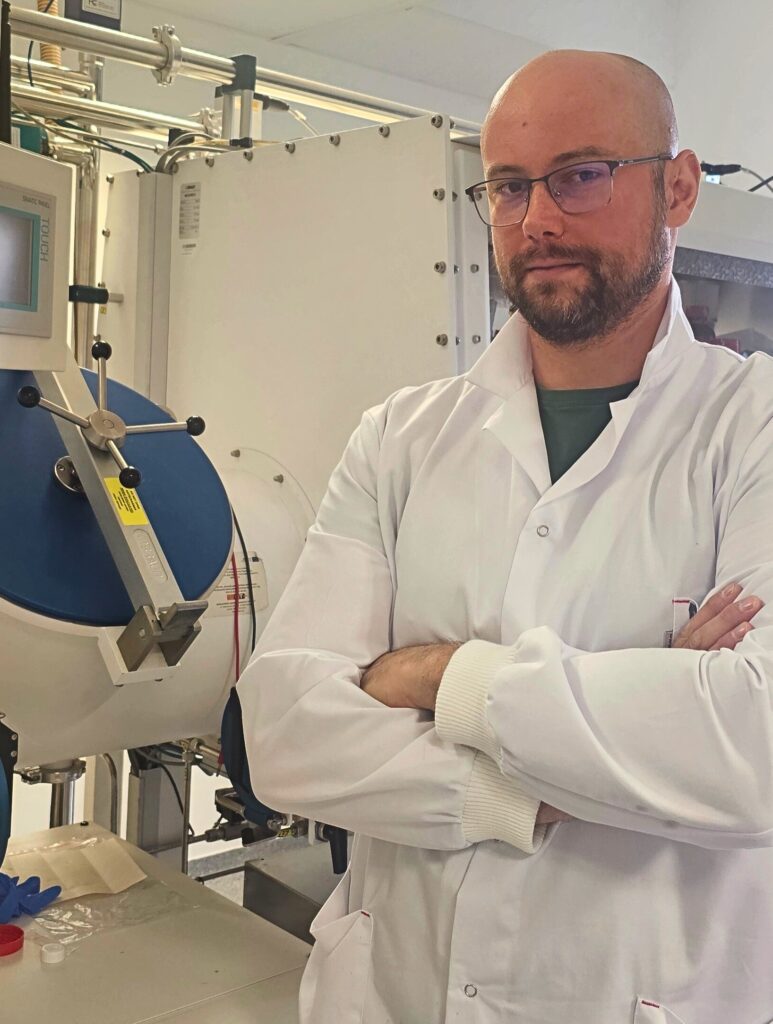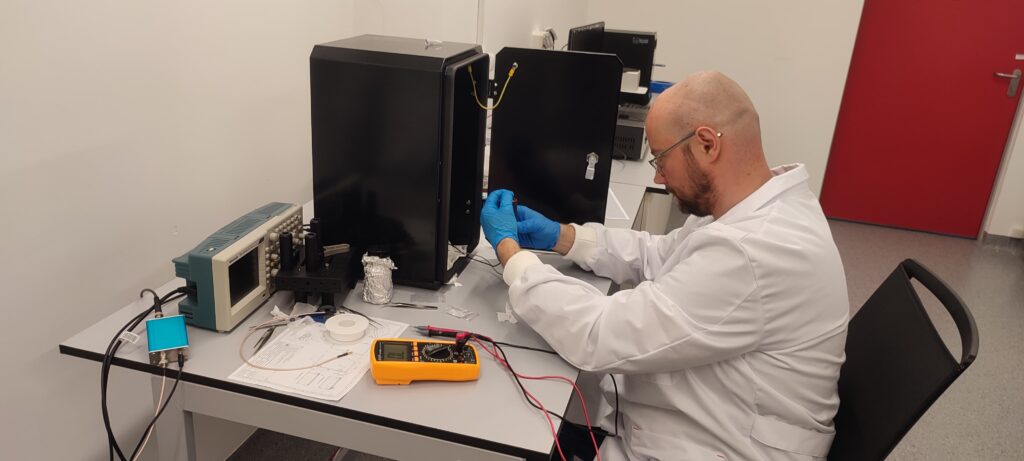Scientists from Łukasiewicz – PORT publish in Advanced Materials

Dr. Michał Makowski from the Photonic Materials & Structures Group, first author of the article “Scaling Up Purcell-Enhanced Self-Assembled Nanoplasmonic Perovskite Scintillators into the Bulk Regime” published in Advanced Materials, discusses the Purcell effect, enhancing scintillation efficiency, and the potential for reducing the cost of medical imaging techniques such as PET scans.
Scintillators warn against radiation and enable PET imaging
– A scintillator is a material capable of absorbing ionizing radiation – which is invisible and extremely dangerous to humans – and responding with a light signal, a kind of warning signal – explains Dr. Makowski. – We don’t need to be near a nuclear power plant to be exposed to this type of radiation. Today, with the rapid development of technology, ionizing radiation is present in many areas – medical diagnostics, industry, and space research.
Scientists are searching for scintillation materials that are both ultra-fast and highly efficient. However, the production of such materials is currently expensive – for example, one cubic centimeter of lanthanum bromide costs about one thousand euros. This material is used, among other applications, in PET scans. – We decided to look for alternative solutions, namely using photonic techniques to improve scintillator performance – says Dr. Makowski. – The key here is the Purcell effect, which allows us to increase the amount of light emitted by the material. When a molecule is excited, it releases the stored energy. We can increase the probability that this energy will be radiated as light and shorten the emission time by placing metallic nanoparticles near the emitter. However, it is crucial that the molecules and nanoparticles do not touch – otherwise, the emission is suppressed.
Amplifying the Purcell effect

Until now, research on the Purcell effect has focused on thin-film materials, which limited the thickness of samples. The innovative approach taken by the scientists, described in the Advanced Materials article, involves embedding perovskite nanocrystals into a polymer matrix together with metallic nanoparticles. – This way, we create multiple local ‘hotspots’ of the Purcell effect. As a result, we are no longer constrained by the sample thickness – our only limitation becomes imagination – emphasizes Dr. Makowski. – This is a breakthrough, because we have demonstrated that the Purcell effect also works in bulk materials, and that it can enhance the scintillation effect under gamma radiation. This approach could, in the future, enable cheaper and more efficient PET imaging, radioactive contamination detection, and could find applications in space research.
The Photonic Materials & Structures Group, led by Dr. M. Danang Birowosuto, specializes in the growth and characterization of perovskite materials and the use of photonic phenomena to enhance their properties. The team is currently working on achieving similar effects in lead-free materials. The researchers hope that their work will pave the way for even broader practical applications.

